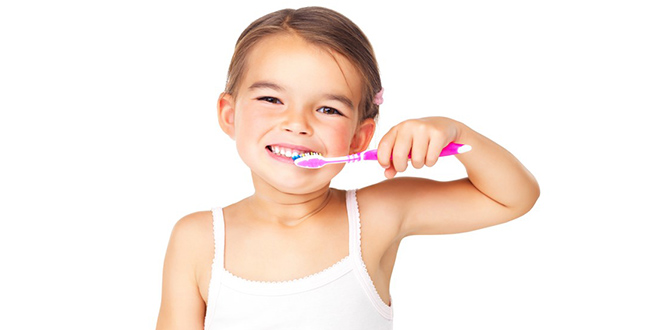In children, teeth should be cleaned as soon as they emerge. By starting early, your baby gets used to the daily routine. A soft washcloth wrapped around your finger can substitute for a brush when teeth first appear. Ask your dentist when you should switch to a toothbrush. Some dentists suggest waiting until four teeth in a row have come out; others recommend waiting until the child is 2 or 3 years old.
Here are some tips for taking care of your child’s teeth:
- Choose a small, child-sized, soft-bristled toothbrush. Soaking the brush in warm water for a few minutes before brushing can soften the bristles even more.
- Both the American Dental Association and the American Academy of Pediatrics recommend using an amount of fluoride toothpaste the size of a grain of rice as soon as your baby’s first tooth appears. You can graduate to a pea-sized amount when your child turns 3 years old.
- Brush your child’s teeth twice a day – in the morning and just before bed. Spend 2 minutes brushing, concentrating a good portion of this time on the back molars. This is an area where cavities often first develop.
- Replace the toothbrush every 3 months, or sooner if it shows signs of wear. Never share a toothbrush with others.
- Start flossing your child’s teeth once a day as soon as two teeth emerge that touch. The use of floss sticks or picks instead of regular string floss may be easier for both you and your child.
- After your child is 6 years old, a fluoride rinse can help prevent cavities.
- Ask your dentist about your child’s fluoride needs. If your drinking water is not fluoridated, fluoride supplements or fluoride treatments may be needed.
- Ask your dentist about dental sealants. These are thin, plastic protective barriers that fill in the chewing surfaces of the back teeth, protecting them from tooth decay.



